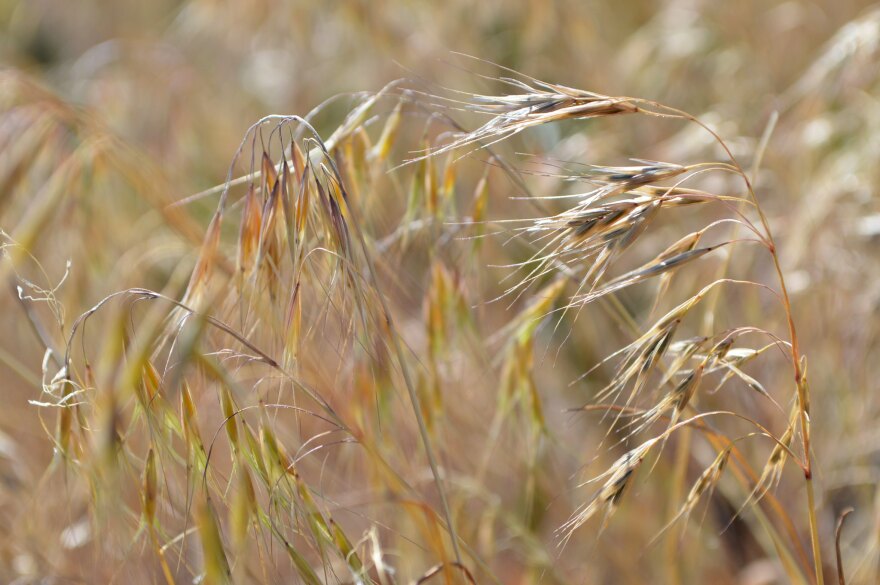Researchers from a number of states, including Idaho, Colorado and Nevada, have found that grazing does not help get rid of cheatgrass, a highly flammable weed.
±őłŮ’s that heavy grazing at certain times of the year cheatgrass and help native species bounce back, but appears to bust that myth.
Matt Williamson is an ecologist with Boise State University. He and his colleagues looked at 14 years of data from central Nevada and found that livestock grazing was associated with more cheatgrass, not less.
“The challenge is that grazing, as we've done it historically, doesn't seem to be helping us get out of this cheatgrass problem,” he said. “And so I think our study and a number of others that have come out in the last few years suggest that we probably have to rethink how we're approaching both livestock management and fire management if the goal is to actually restore native plant communities.”
Though they didn't evaluate it in the study, Williamson said targeted grazing could still be helpful in the short-term if it reduces the amount of fuel available and breaks up expanses of the grass in a way that could keep fire from spreading as quickly.
Cheatgrass in the mid-to-late 1800s as a contaminant in seed & straw. ±őłŮ’s been gradually taking hold across the West ever since.
Wildfire and the highly flammable grass feed off each other. The plant grows well in areas that have been disturbed, so fire generally results in more cheatgrass, which results in more fire, which again results in more cheatgrass.
“Because it's a pretty aggressive responder, it tends to be the first thing back after fire,” said Williamson. “And so as it slowly takes over the site, it keeps making the site more and more flammable and pretty soon the only thing that can survive there becomes cheatgrass, and the cycle sort of continues so that you'll go from 10 years between fires to five years between fires to places that are burning almost every other year.”
Scientists are studying that might be able to the cycle of cheatgrass and fire.
As KRCC has :
The BLM is currently studying a bacteria strain that could help control cheatgrass. In June, the Western Governors’ Association announced a partnership with the U.S. Department of Agriculture to look for ways to address cheatgrass. Conversations are ongoing. In a statement, WGA Policy Advisor Bill Whitacre said the spread of cheatgrass has ”become a critical threat to healthy western rangelands,” adding that it harms watersheds and diminishes wildlife habitat.
This story was produced by the Mountain West °µşÚ±¬ÁĎ Bureau, a collaboration between Wyoming Public Media, Boise State Public Radio in Idaho, KUER in Salt Lake City, KUNR in Nevada, the O’Connor Center for the Rocky Mountain West in Montana, and KRCC and KUNC in Colorado.





